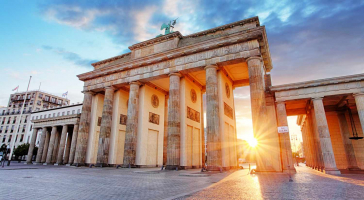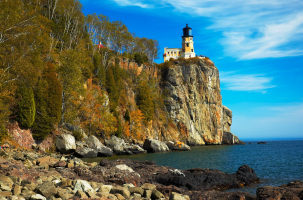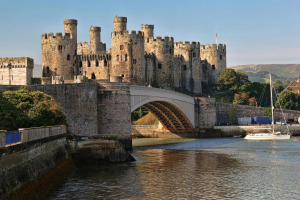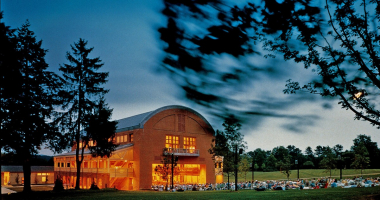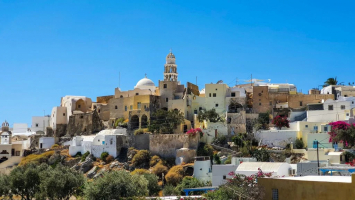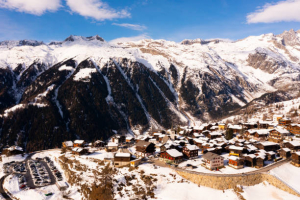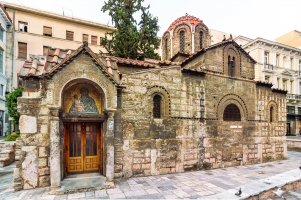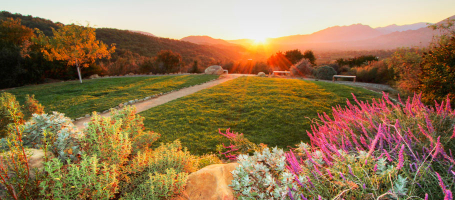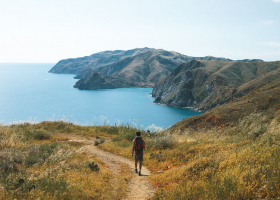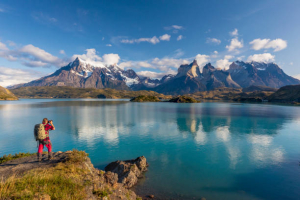Top 10 Best Things To Do In Spain
Spain is one of the most diverse countries in Europe with 50 provinces, 17 autonomous regions, and more than five languages spoken. Every corner in Spain is ... read more...different with unique, impressive historical architecture that makes visitors feel like they are immersed in revolutionary art movements. Coming to Spain, you also enjoy beautiful beaches, vibrant festivals, unique natural wonders, and especially the most wonderful people on the planet. Here is a list of the 10 best things to do that you must try while in Spain.
-
Madrid is a major attraction for tourists from all over the world when coming to Spain. One of the most exciting things to do in Madrid is the truly immersive experience of enjoying the Flamenco Show. What you get to witness is dance accompanied by guitar, and great vocals accompanied by applause.
Flamenco, a musical genre with a rich historical basis and a long history, is the enchantment of Spanish singing and dancing. It was created in the Andalusia area of southern Spain and has roots in a variety of cultures, primarily Arab, Jewish, Spanish, and Romanian. It is currently one of the most well-known Spanish musical genres worldwide.
Visitors can even find performances throughout the streets of Madrid by many talented artists. People from all over the world know the names of Spain's greatest and oldest Flamenco artists like Camarón de la Isla, Paco de Lucía, Lola Flores, or José Mercé. The show is even held at various locations. So, if you are wandering the streets of Madrid, you are bound to come across a great moment to enjoy a Flamenco performance. It is not merely pleasing to the eyes but also an effective method of entertaining your ears. The best time for visitors to travel to Madrid and enjoy the Flamenco Show is around June every year.
So whether you are a fan of Flamenco or not, one of the best things to do when visiting Spain is to attend a Flamenco Show to feel the passion and attraction of the singers, as well as those of skilled hands blowing flamenco guitars.
In sum, watching the Flamenco Show in Madrid is a great experience:
- Flamenco, a genre of Spanish dance and singing music, was created in the Andalusian region of southern Spain and has its roots in many cultures.
- You can witness is a dance accompanied by guitar, and great vocals accompanied by applause.
- The best time for tourists to visit Madrid and enjoy the Flamenco Show is around June every year.
WhereToNextVlog THE BRIONES FAMILY -
In addition to beaches and other natural attractions, the country of Spain is well-known for its football. Football fans from all over the globe travel to Barcelona, the home of one of the most prosperous clubs in the world, F.C. Barcelona, to witness a live football match. And the Camp Nou stadium is the ideal location to accomplish it.
Barcelona's home stadium, Camp Nou (Nou Camp), has been in use since it was finished in 1957. It is the largest stadium in Spain and Europe and the third-largest football stadium in the world with a seating capacity of 99,354. Many notable matches are held in the Barcelona Stadium. It has hosted 21 Supercopa de Espana final matches, two of the four games at the 1964 Cup of Nations, two of the 1989 and 1999 UEFA Cup/Champions League finals, two UEFA Cup Winners' Cup finals, four Inter-Cities Fairs Cup finals, five UEFA Super Cup finals, and the 1992 Summer Olympics soccer tournament final. It has also hosted five games, including the 1982 FIFA World Cup opening match.
The home ground of F.C. Barcelona is one of those stadiums that millions of football fans around the world dream of having the opportunity to visit. So, if you're into sports or want to witness the fans chanting in the stadium, visit Camp Nou Stadium to watch a live football match. Before entering the field, you should learn a few hymns so that you can immerse yourself in the exciting and fun atmosphere of the match. This is sure to be one of the best things to do in Barcelona and a memorable experience for you in Spain.
In a nutshell:- Camp Nou is the largest stadium in Spain and Europe and the third-largest football stadium in the world with a capacity of 99,354 seats and hosts many of the biggest tournaments on the planet.
- Watching a football match at Camp Nou stadium is the dream of many people and will be a memorable experience if you have the opportunity to come here.

fcbarcelonalatestnews.com Fredosophy -
If you have ever dreamed of literally participating in a tomato war, it is time to make it a reality during your trip to Spain. Most visitors at the end of their trip to Spain will say that taking part in the festivities of La Tomatina is one of the most enjoyable things to do in Spain. La Tomatina Festival is an annual event held near Valencia, Bunol, is held every August and attracts a large number of participants to this country. Serving as the venue for many festivals throughout the year, La Tomatina often attracts more than 40,000 participants and makes for one of the most memorable events imaginable.
At 10:00 am on the day of the festival, a chunk of Jamon (Spanish ham) is hung atop a sleek pole in the town square. To obtain the Jamon, the player must climb the pole. And the prize for the winner in addition to delicious Spanish ham also gets the admiration of locals as well as tourists. At 11:00 am sharp, the La Tomatina festival gets underway with a big bang. The event literally starts with a huge fireworks show, and then a food fight that lasts for an hour follows. Over 150,000 tomatoes were splattered throughout the event, and everyone (including the town) was almost painted crimson.
Furthermore, attendance at the festival also requires a ticket due to its popularity. Visitors will have to pay 10€ for this biggest and most unique food fight.
In brief:
- Taking part in the festivities of La Tomatina is one of the most memorable events while in Spain.
- The La Tomatina festival gets underway with a big bang at 11:00 am sharp.
- Visitors will have to pay 10€ for the entry ticket.

a.storyblok.com World Nomads -
If you are someone who likes to enjoy yourself in the snow, then the Sierra Nevada is waiting for you. The mountains here offer the most amazing activities to do in Spain and skiing is definitely one of them. The Sierra Nevada is home to one of the highest ski resorts in Europe and a paradise for skiers.
The Sierra Nevada mountains, which can be found in southern Spain, are towering over the lovely city of Granada. Pradollano, a mountainous community on a mountaintop, is the only ski resort in the Sierra Nevada. Travelers may enjoy snow here for roughly five months from late November to early May. February and March are the ideal months to visit the resort due to the great weather and snow quality. However, this is also the time of day when there are the most visitors.
Skiing in the Sierra Nevada has several benefits, including the fact that you will not have to worry about inclement weather because the resort has a superb climate with more than 75% of the winter days being sunny. If required, you can bring sunglasses and sunscreen with you.
With the snowy landscapes and top-notch amenities offered by the resort, visitors here have a lot to look forward to. In fact, as far as skiing is concerned, if you are a beginner and have no skiing experience there will be professional coaches on hand to guide you, while professional skiers can do it on their own and enjoy it the way they want. So come and spend your time skiing in Spain, you will never be disappointed.
In sum:
- Sierra Nevada is home to one of the highest ski resorts in Europe.
- Visitors can ski in the Sierra Nevada Mountains for about 5 months from the end of November to the beginning of May, of which February and March are the most ideal times.
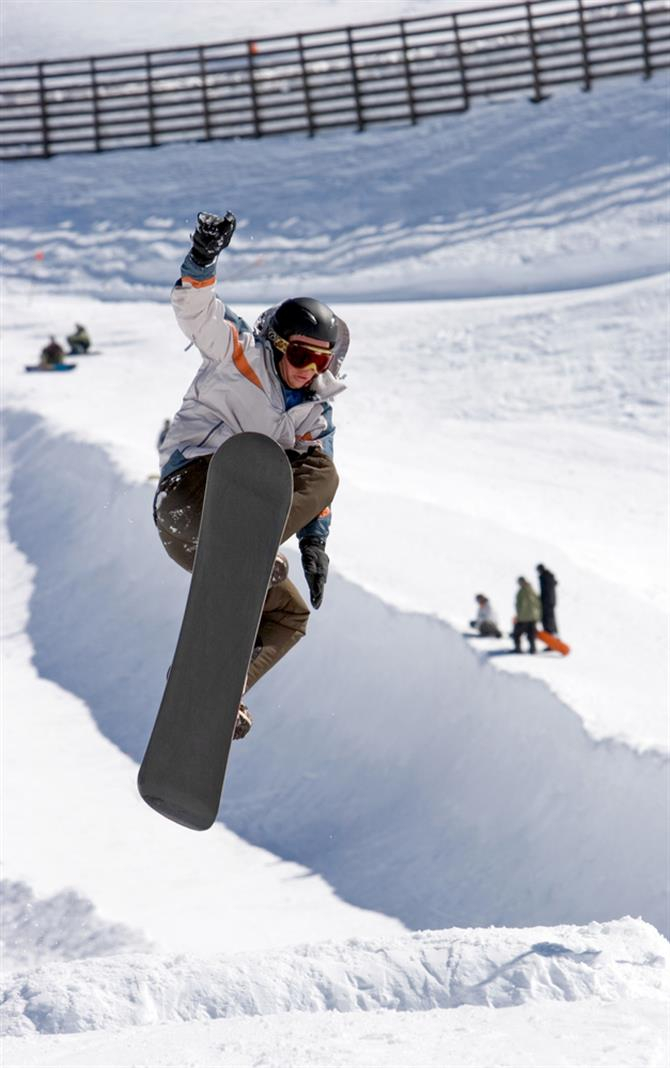
sh-assets.holidu.com Mojo Estates -
Castilla-La Mancha's capital is a magnificent city where you might get lost in the ancient walled old town. Toledo, which is only a few miles from Madrid, is home to artifacts from Jewish, Muslim, and Christian civilizations, including the cathedral, the Alcázar, and the El Greco museum, all of which are well worth a visit.
One of the greatest ways to see Toledo's most genuine side is to go around the synagogue, with its congested cobblestone lanes and synagogue. Toledo is known for its steel, swords that have been forged in Toledo for over 2,000 years. The gated Jewish Quarter in Toledo's center is made up of interesting bazaars, historic synagogues, and public baths. During the Middle Ages, the region was home to a sizable Jewish population, who frequently coexisted peacefully with the nearby Muslim and Christian populations. Visitors taking this tour will have a guide around the area to learn about their medieval customs and traditions.
When wandering along the narrow cobbled streets, visitors can also discover information about Jewish households. The Sephardic Museum, located in the old Samuel ha-Lev Synagogue building, provides one of the greatest glimpses into the neighborhood's heritage. El Transito Synagogue is another name for this building from the fourteenth century. Visitors are sure to marvel at the Mudejar ceiling design and intricately carved stucco exterior of this unique structure.
In short:
- One of the best ways to see the truest side of Toledo is to circle the Synagogue with its busy cobblestone streets.
- Guests joining this tour will be accompanied by a guide to learn about medieval Jewish customs and traditions.
- The Sephardic Museum also offers the best glimpses of the region's heritage.
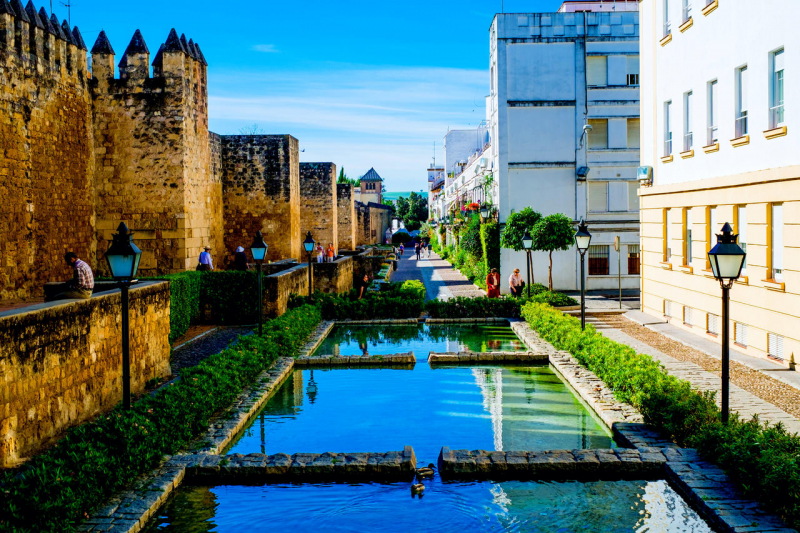
planetofhotels.com chrisdglobetrotter -
To enjoy cherry blossoms in full bloom in spring, head to Extremadura's Valle del Jerte (Jerte Valley) in northern Spain's Caceres instead of traveling all the way to Japan. Valle de Jerte is the most breathtaking place in Spain when the cherry trees are in full bloom because of the early-spring scene of delicate petals wafting across the hillsides on the fresh mountain wind.
In the highlands of northern Extremadura, Valle del Jerte is a distinctive location surrounded by cherry tree orchards and waterfalls. An astonishing 2 million cherry trees welcome spring with a show of white flowers, a fleeting sight that lasts little more than 2 weeks. The valley gradually blooms as the cherry trees on the lower slopes receive first sunlight, then the trees above the steps higher on the slopes.
Soon after the last frosts have disappeared from the Jerte Valley's slopes, the first cherry blossoms start to bloom. This means that the flowering season changes from year to year and is entirely determined by the weather. To be precise, you must arrive within the 15-day bloom period, which runs from late March to early April. It's the ideal time of year to take a stroll through the cherry-tree-dotted fields because you can take in the unending displays of white blooms that signal the arrival of the season's delectable scarlet fruit.
In a nutshell, strolling among the cherry trees in full bloom in Extremadura is a great experience for tourists because:
- The Jerte Valley in Extremadura is the best location in Europe to view cherry blossoms.
- You must come during the 15-day blooming period, which runs from late March to early April.
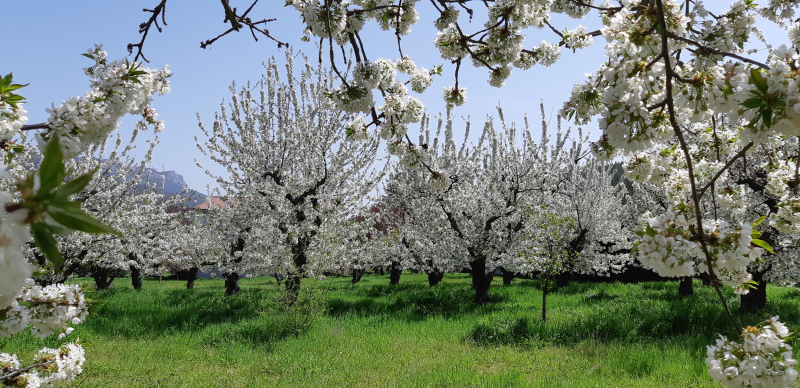
wikimedia.org -
Spain's southernmost region is home to a number of magnificent structures, including the Alhambra in Granada, the Giralda in Seville, and the mosque in Cordoba. It also has a world-class culinary scene. The province of Cadiz is known for its bluefin tuna because of its long tradition of fishing for this magnificent fish and its unique celebration traditions. Do not pass up the opportunity to sample the delectable almadraba tuna if you visit Cadiz.
The term "almadraba" is the gem of the coastal fishing towns of Andalusia because it is an ancient method of collecting Atlantic bluefin tuna as it travels from the Atlantic to the Mediterranean or vice versa. The origins of the almadraba may be traced all the way back to the Phoenicians, who built Cadiz around 800 BC.
Each year, in May and June, the four major tuna-producing regions of Conil, Barbate, Zahara de Los Atunes, and Tarifa commemorate their culture and history with Almadraba Tuna Festivals. These are centered on using the traditional almadraba net to capture fish, but they have developed into much more, which tourists may take advantage of. You can enjoy spectacular tapas meals made with the freshest and best tuna in the country close to neighboring pubs and restaurants
There are also culinary exhibitions, demonstrations, and events called "Ronqueo," when chefs, fishmongers, or fishermen masterfully chop a whole tuna into its many delectable parts while explaining the process to onlookers and letting you taste some of the freshest tuna. It is a great time to come because these festivals provide not only delicious cuisine to eat but also music, performances, tours, exhibitions, and much more.
In sum, do not miss the chance to taste delicious almadraba tuna if you visit Cadiz:
- The term "almadraba" is an ancient method of catching Atlantic bluefin tuna.
- May and June are times of cultural and historical celebration of the Almadraba Tuna Festival.
- You can have the freshest and best tuna meals near the pubs.
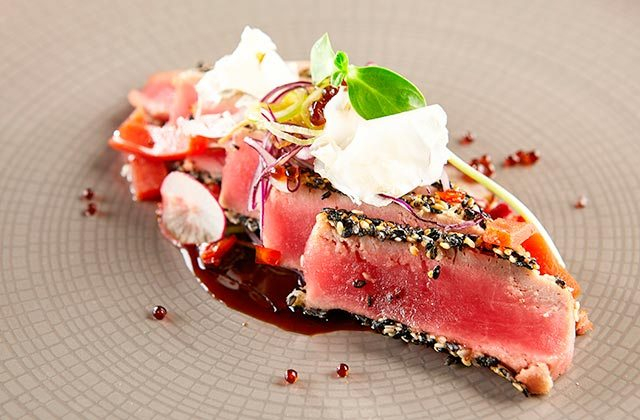
fuertehoteles.com Asociación Prensa Cádiz -
The greatest wines in the world may be found in Spain. And if there is one region in Spain that is recognized on a global scale for the quality of its wineries, it is La Rioja.
Along the Ebro River is where the Rioja wine region can be found; this location is exceptional for its capacity to create top-notch wines. Here, wines were so highly regarded and in such high demand in the late nineteenth century that it was decided they ought to be safeguarded. As a result, in 1925 the first Designation of Origin was established to safeguard Rioja, including all three of its "zones" (including Alta, Alavesa, and Oriental), against the danger of fake wines being made.
In Rioja, aging is divided into four categories: Generic, Crianza, Reserva, and Grand Reserve. Generic wines are frequently consumed fresh and young with a very little aging, which makes them considerably lighter and fruitier. When they desire some latitude with the aging requirements, winemakers can also designate a wine as Generic. Thus, the wine typically represents relatively contemporary interpretations of Rioja. Crianza is a term used to describe wines that have matured for at least two years, at least one of those years being spent in wood for red wines or at least six months for white and rose.
Reserva is a little more stringent. This red wine must mature for a minimum of 36 months, 12 of which must be in wood, while white and rosé wines must age for 24 months, at least six of which must be in oak. The longest aging period is Gran Reserva, which requires a minimum of 24 months in wood, followed by 36 months in bottles for red wines or 48 months for whites and rosés, with a minimum of 6 months in barrel. The area places a great deal of importance on these aging requirements, which are fairly difficult but ultimately what give some of these wines their extraordinary quality.
To conclude, drinking Rioja in La Rioja is the best thing to do in Spain because:
- Rioja wines are known as the best wines in the world.
- It is divided into four categories: Generic, Crianza, Reserva, and Grand Reserve with different aging levels.
- In 1925, the First Origin designation was established to protect Rioja against the threat of counterfeiting this wine.
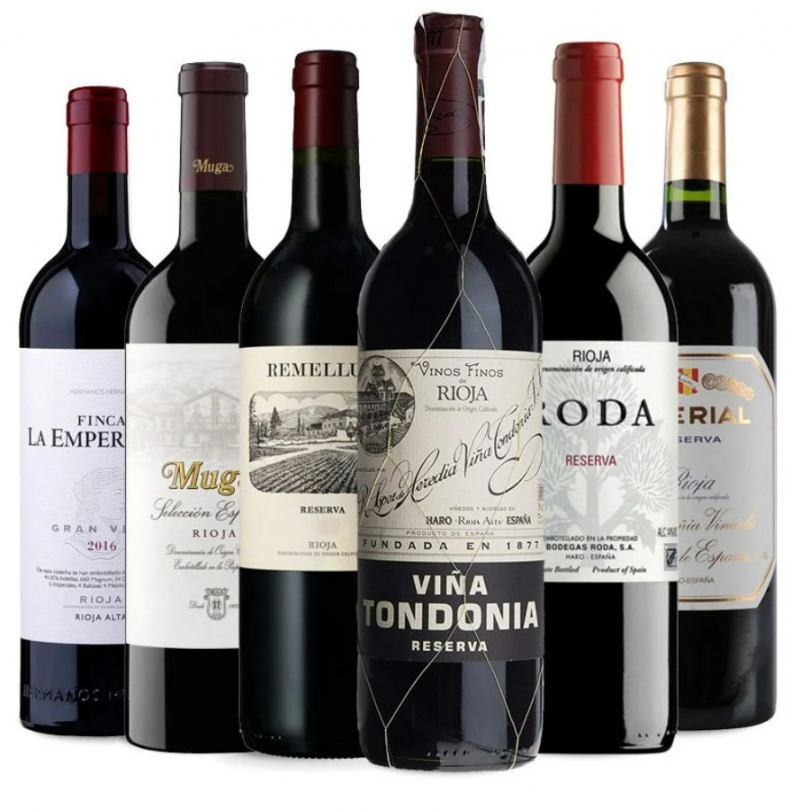
decantalo.com 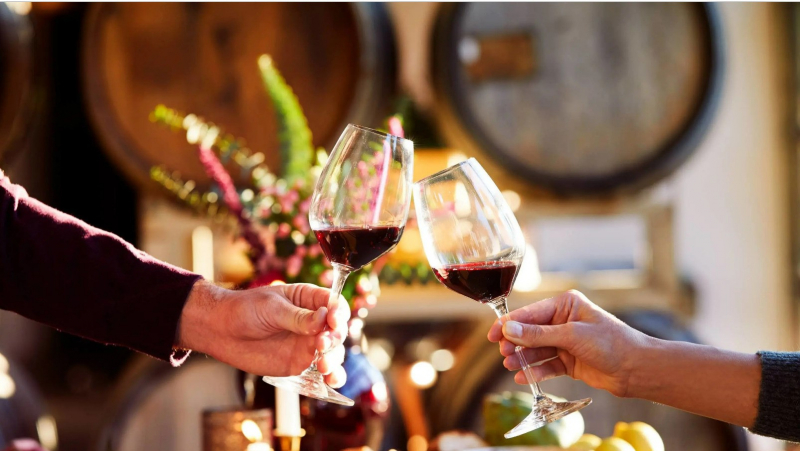
virginwines.co.uk -
Visitors to Spain are compelled to try paella, one of Spain's most well-known foods. This meal is a synthesis of all Spanish cuisine, made with ingredients such as rice, saffron, vegetables, chicken, and seafood that are simmered and enjoyed in a pan. The most popular varieties of paella are mixed paella, chicken paella, and seafood paella (a combination of seafood, meat, and vegetables). Although originating from Valencia, Paella is recognized as one of the national dishes of Spain.
Paella was first prepared in Valencia as a lunch dish for farmers and farm laborers. The workers will gather whatever is in the vicinity of the rice fields, which are typically tomatoes, onions, and snails. Spain's social changes and rising level of life in the late 19th century encouraged meetings and excursions into the countryside and the paella's ingredients were altered as a result. The ingredients were frequently used during this time period such as short grain white rice, chicken, rabbit, snail, duck, butter beans, northern beans, running beans, artichokes (used in place of beans during the winter), fresh rosemary, monosodium glutamate, saffron, garlic (optional), salt, olive oil, and water.
Paella is traditionally prepared in Valencia over an open flame that is stoked with pine branches and pine cones. This produces a fragrant smoke that penetrates the paella as it cooks. Additionally, paella was served on plates rather than eaten directly from the pan by the guests. Some other recipes also require the paella to be covered and left to stand for 5 to 10 minutes after cooking.
In sum:
- Visitors to Spain should try paella, one of Spain's most famous dishes.
- Paella is traditionally prepared in Valencia over an open fire lit with pine branches and pine cones.
- This meal is a combination of ingredients such as rice, saffron, vegetables, chicken, and seafood that are simmered and enjoyed in a pan.
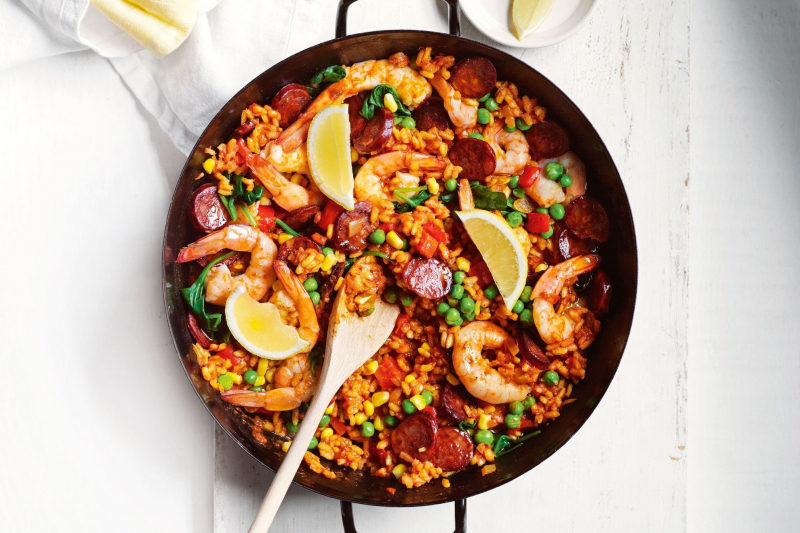
taste.com.au Joshua Weissman -
Ensaïmada, a sort of sweet bread roll, is a traditional product on the island of Mallorca, Spain that has been produced and consumed since the 17th century. This is not only a famous dish in Spain but also a popular dish in Southwest Europe, Latin America, and the Philippines.
The first written references to the origin of the Mallorcan ensaïmada date back to the 17th century. At that time, flour was the main ingredient used to make ensaïmada and this signature cake was even made during national festivals and celebrations. In Spanish tradition, ensaïmada is a pastry eaten only at Easter, but today you will find it made and sold year-round.
Mallorca's ensaïmada is in the form of a roll that is made from a mixture of thick flour, water, sugar, eggs, and a type of lard called "saim". The exterior of the pie crust, they are covered with a combination of butter, sugar, and shredded cheese. There are two types of ensaïmada including plain ensaïmada, sprinkled with optional powdered sugar, and stuffed ensaïmada. The inside of an ensaïmada can be varied, featuring "Cabello de Ágel" (made with pumpkin paste and sugar), cream, "Tallades" and chocolate.
Any visitor to this sunny Balearic island will enjoy a Mallorcan ensaïmada for breakfast or an afternoon snack. It is usually served simply with coffee or hot chocolate.
In a nutshell:
- Ensaïmada, a sweet bread roll, is a Mallorca tradition dating back to the 17th century that is popular not only in Spain but also in southwestern Europe, Latin America, and the Philippines.
- Mallorca's ensaïmada is a roll made from a mixture of thick flour, water, sugar, eggs, and a type of fat called "saim" with two main types plain ensaïmada and stuffed ensaïmada.
- You can enjoy Mallorcan ensaïmada with coffee or hot chocolate at any time of the day.

davebakes.files.wordpress.com 
thespruceeats.com













